Fireballs
Fireballs
Meteorite fall in the Black Forest?
Some particularly lucky night owls in Switzerland and southern Germany were able to observe an impressive natural phenomenon on 01.09.2021. A bright meteor lit up the sky in the border region during the night at around 03:12 UT (05:12 CEST). The spectacular fireball could be seen from far away and was even captured by some fireball networks and webcams.
There were also a large number of eyewitnesses who shared their observations with IMO/AMS. From the reports, it was even possible to calculate the trajectory.
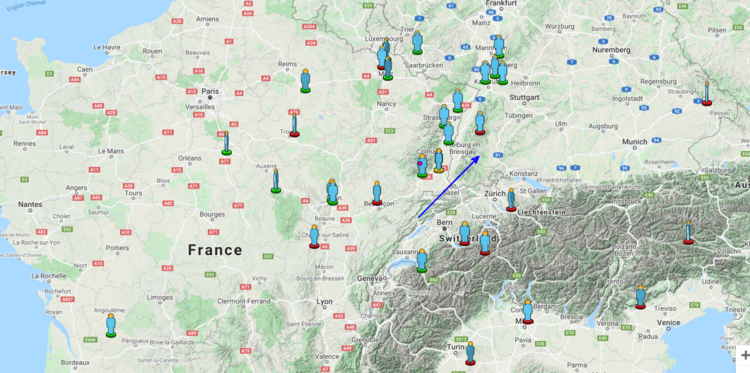 IMO/AMS trajectory and eyewitness reports.
IMO/AMS trajectory and eyewitness reports.
The fireball was also captured by 12 cameras of the all-sky camera network FRIPON. The network is coordinated and expanded in Germany by the University of Oldenburg. The station furthest away from the event that was able to capture the fireball is located in Asiago, Italy and is almost 500 km from the flight path. All images and data can be viewed here.
With the data from the FRIPON network, the trajectory could be calculated more accurately. In addition, further scientific details of the meteoroid could be determined, such as the initial mass of 0.5 - 2 kg. The object was first sighted over Yverdon-les-Bains, Switzerland, at about 05:12:56 CEST. After flying through the atmosphere at about 25 km/s, it was last seen over Gütenbach, Germany.
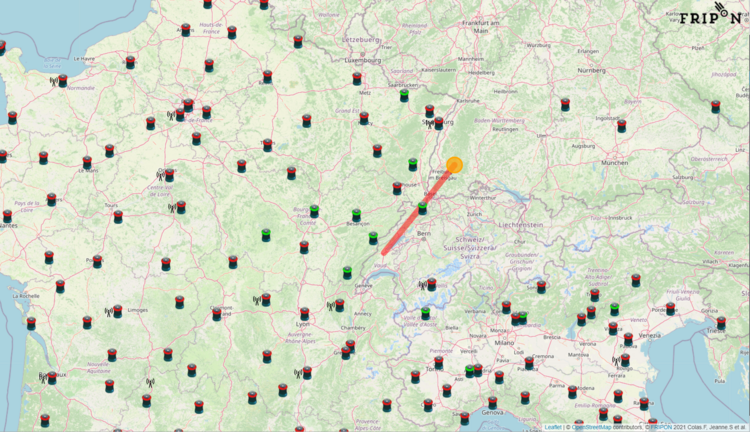 FRIPON trajectory and cameras that captured the fireball.
FRIPON trajectory and cameras that captured the fireball.
Update: The fireball was also captured by cameras of the Swiss Meteor Network. It is operated, under the umbrella of the Swiss Astronomical Society SAG, by the members of the Meteor Astronomy Group (FMA). They were also able to determine a trajectory from their all-sky data.
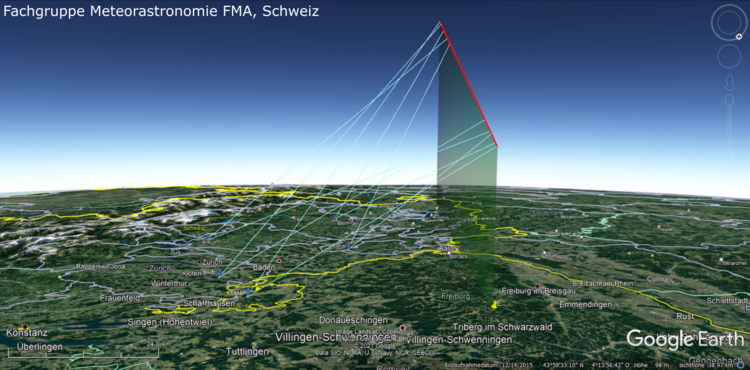 Fireball trajectory calculated from data from the Swiss Meteor Network.
Fireball trajectory calculated from data from the Swiss Meteor Network.
Erwin Späni's AllSky7 station in Wangen, Switzerland, imaged the fireball with 3 of its 7 cameras.
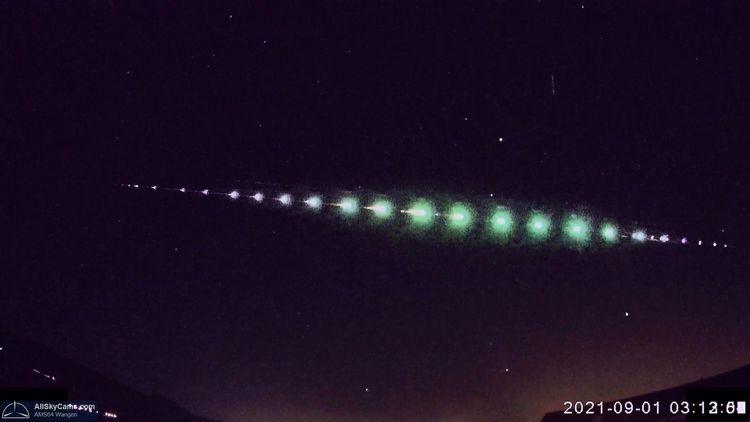 Stack of images taken with AllSky7. Copyright E. Späni, AllSky7 camera network.
Stack of images taken with AllSky7. Copyright E. Späni, AllSky7 camera network.
Based on FRIPON data, it could be calculated that parts of the meteoroid might have survived the flight through the atmosphere. In total, about 30 to 140 g (or even more) of meteorite material could have fallen to Earth near Lauterbach. The scatter field (the area where the meteorites are most likely to be found) can be seen below. If you want to search for meteorites, this area is a good place to start.
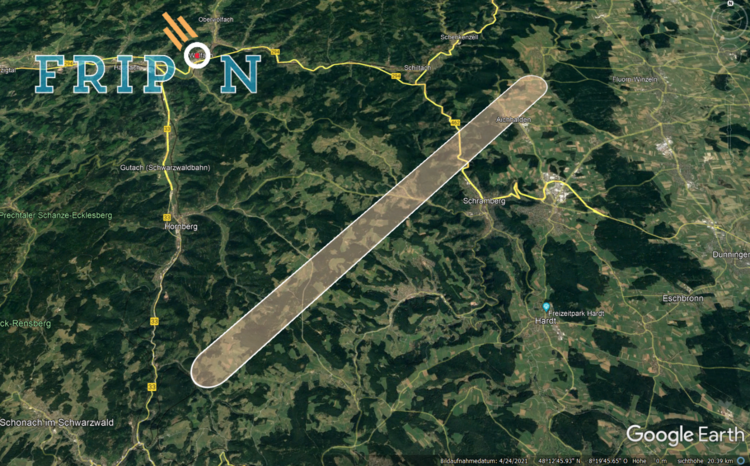 Scatter field calculated by FRIPON.
Scatter field calculated by FRIPON.
Since meteoroids and asteroids are some of the only remnants from the beginnings of the solar system, meteorites are studied to draw conclusions about their formation and evolution.
If you think you have found a meteorite, you can narrow down whether it is possibly a real meteorite by carrying out a few simple tests. Almost all meteorites contain a certain percentage of iron/nickel. This makes them relatively heavy. Also, the surface melts in the atmosphere and freshly fallen meteorites have a black, smooth and dull surface. Fresh, recently fallen meteorites should be handled with special care. Please use disposable gloves. Unlike old meteorites, you should not use a magnet to check whether the object contains iron or nickel. This would destroy any residual magnetic field.
Further helpful information and hints can be found here.
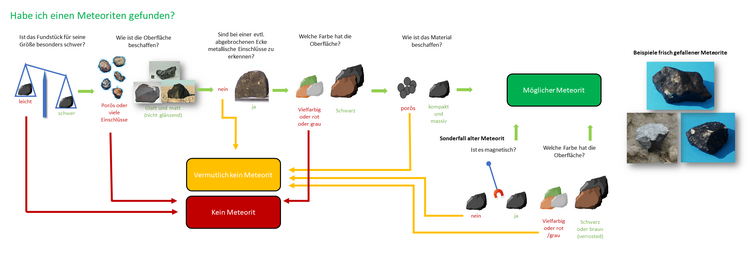 Recognising meteorites, a short checklist. Download
Recognising meteorites, a short checklist. Download
If, after reading this information, you think you have found a real meteorite, please take some photos of the object and send them together with information about the size, location and time of finding to the following e-mail address: meteorit@uni-oldenburg.de. Don't forget to include your contact information.
Edit: There are more pictures of this spectacular fall. It was recorded at the Säntis mountain station with the webcams stationed there.
Webcam image of the fireball. Copyright Säntis Schwebebahnen AG



